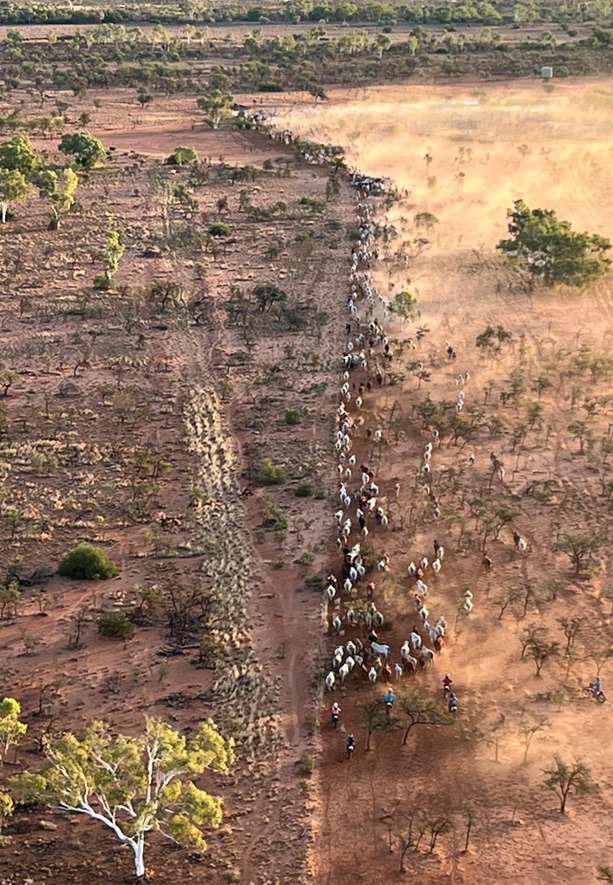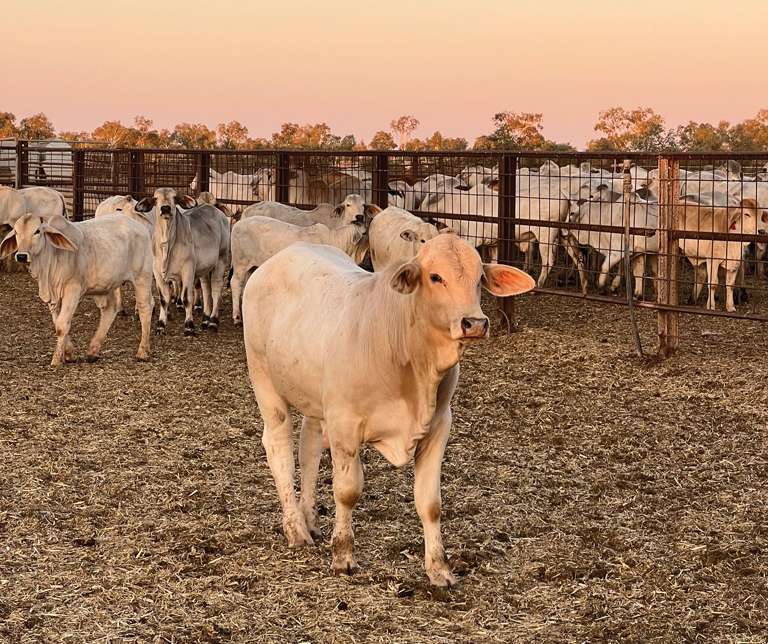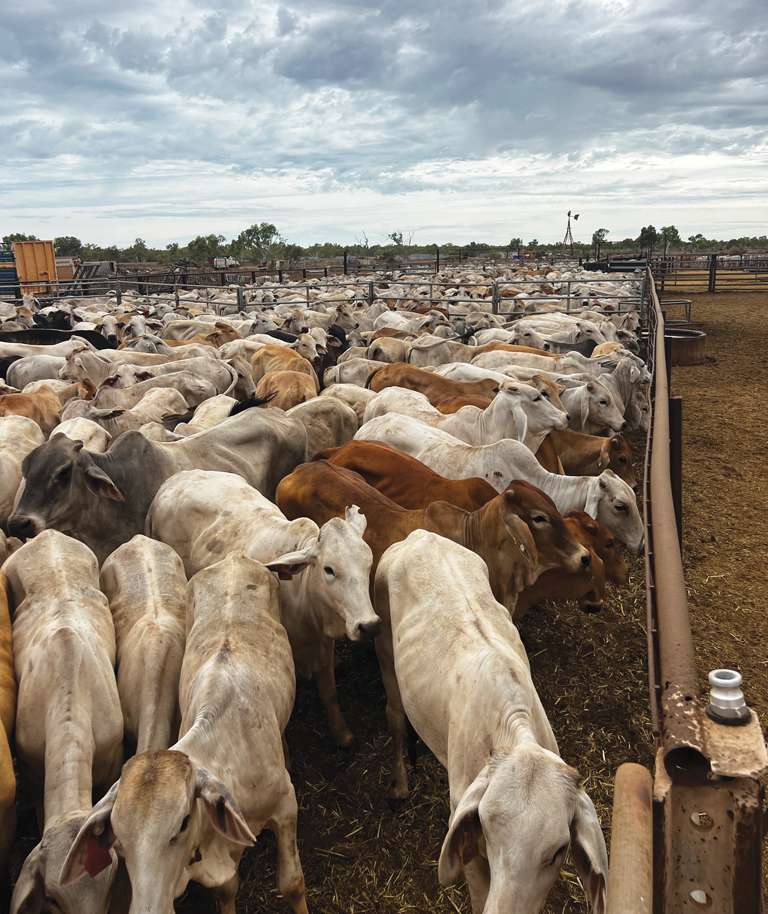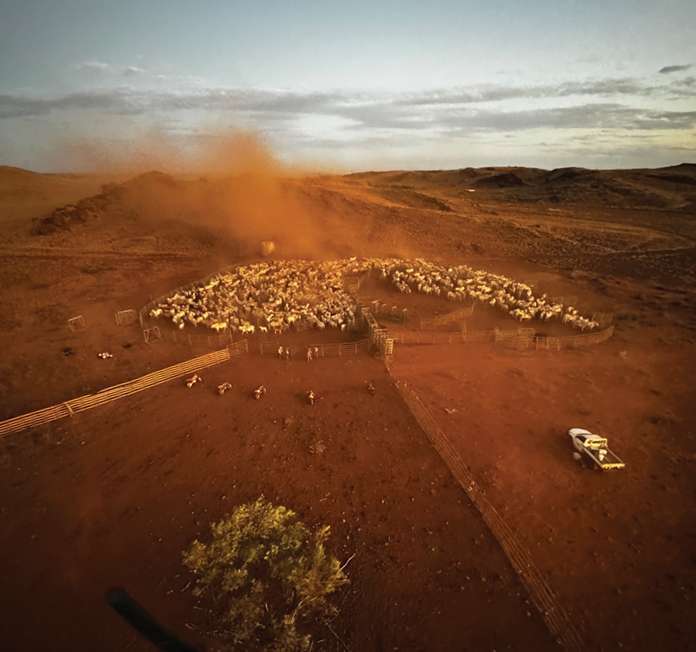By Lea Coghlan, photos by the Bettini family
In the rugged environment of the Pilbara, Western Australia, the Brahman ticks all the boxes for Mark Bettini, Bettini Beef.
Mark, a second-generation beef producer, believes the breed’s ability to weather the environment, at times unforgiving, makes it a crucial ingredient in running a successful commercial beef operation in the state’s northwest region, where his family owns and operates four properties.

The home block is De Grey Station, 80km east of Port Headland, and is exclusively grey Brahman bulls, with herds on Mallina, Sherlock and Pyramid, between Port Headland and Karratha, dominated by quality high-grade Brahman males and females.
Mark’s father John and uncle Bob discovered the merits of the Brahman breed in 1987 when they purchased their first Brahman bulls for their commercial beef operations on Rockley and Ashburton Downs, Carnavon.
The former sheep farmers introduced Brafords, and soon found out how good the Brahman genetics were in making stock adaptable to the environmental conditions, where rainfall averages some 300-400mm a year. Ashburton has less than a 300mm annual rain average, while Degrey Station receives a 340mm average.
Today, the family runs a 35,000 strong herd, with 17,000 females and followers, across just over one million hectares.

While the Brahman is the foundation of the herd, a desire to spread market risk in recent years prompted diversification into cross breeding, with success.
“We started using grey Brahman bulls on De Grey back in 1996 because at that time, and still today, live export was our biggest market,” Mr Bettini said.
“It still is our most profitable market.
“Our herd consists of 90 per cent high grade Brahman breeders with a few crossbred animals.
“We are cross breeding high content Brahman females with Charolais, Senepol and Murray Grey bulls, to diversify so we are not completely relying on live export and are able to feed into supply chains down south if we need to.
“Each of the crossbred cattle have benefits.”
“The Charolais-Brahman cross are highly sought after in Indonesia and in feedlots down south and the Senepol-Brahman cross looks fertile and docile.”
“There’s no reason why we can’t use genetic attributes and market acceptance of other breeds to complement our Brahmans and get hybrid vigour.”
“To survive in our country we believe we need a high content Brahman animal. That gives us the best shot of survivability.
“But by crossing with cattle with other desirable genetic traits we can produce a desirable animal.”
The Bettini family has been a regular buyer in the Queensland bull market for a number of years – including at the industry’s flagship sale, Rockhampton Brahman Week where it picked up 11 bulls last year – introducing genetics from Apis Creek, Raglan, Glengarry and Carinya into their herd.

They aim to breed around 40 replacement bulls a year to complement the same amount of bull purchases.
Mr Bettini said there was a strong focus on fertility which was a priority in the female herd.
Herd bulls must have good morphology and good structural confirmation to be able to withstand the harsh Pilbara environment.
“They do really well here,” Mr Bettini said. “In a year like we have had this year, which has been very dry, you realise how well the Brahman performs.
“They are sensitive animals. Good to work and good to educate.”
Bettini Beef targets the live export market turning off up to 12,000 yearlings around the 350-360kg weight a year and despite the market’s volatility, Mr Bettini remains confident it will continue to remain their prime focus.
“I am confident that demand for high grade Brahmans is going to always be there to the north,” Mr Bettini said.
“They want well bred, good quality high grade Brahmans and they will take them over crossbred cattle.
“As long as the live export market is there and continues to pay us a premium, we will continue to support it.”
Nonetheless, the family is diversifying into other markets, mainly supply chains south – using a farm they own at Gingin, 67km north of Perth, as a depot – where they’ve sent Brahman cattle to feedlots and sold the yearling trade.
It’s a market they will continue to use when conditions demand.


